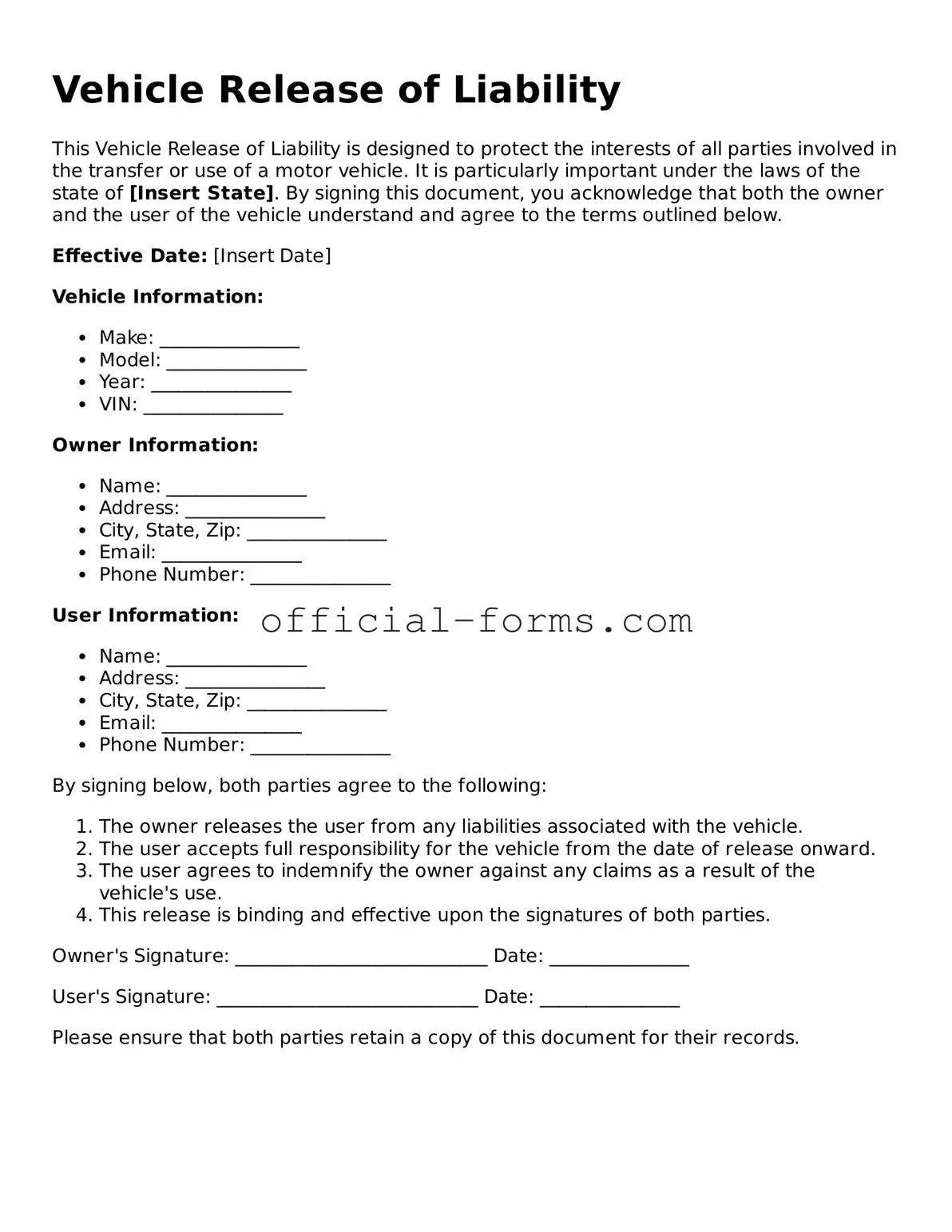When filling out the Vehicle Release of Liability form, many individuals inadvertently make mistakes that can lead to complications. One common error is failing to provide complete and accurate information about the vehicle. This includes the vehicle identification number (VIN), make, model, and year. Omitting any of these details can result in delays or even rejection of the form.
Another frequent mistake is not signing the form. A signature is essential as it confirms that the individual understands and agrees to the terms outlined in the document. Without a signature, the form is considered incomplete, which can cause issues when trying to release liability.
People often overlook the importance of providing the correct date on the form. The date indicates when the release of liability takes effect. If the date is missing or incorrect, it may lead to confusion regarding the timeline of liability release.
In some cases, individuals forget to check for any additional requirements specific to their state or local jurisdiction. Each area may have different rules regarding vehicle liability releases. Failing to comply with these regulations can result in the form being invalid.
Another mistake involves not retaining a copy of the completed form. Keeping a copy is crucial for personal records and can serve as proof that the release was submitted. Without this documentation, individuals may find it challenging to resolve any disputes that arise later.
Many individuals also neglect to review the form for errors before submission. Typos or incorrect information can lead to misunderstandings or delays. Taking a moment to double-check the form can save time and hassle in the long run.
Additionally, some people do not fully understand the implications of the release. It is vital to comprehend what rights are being waived and the responsibilities that remain. A lack of understanding can lead to unintended consequences.
Finally, individuals sometimes fail to notify the relevant parties, such as insurance companies, about the submission of the Vehicle Release of Liability form. Keeping all parties informed ensures that everyone is on the same page and can help prevent future liability issues.
